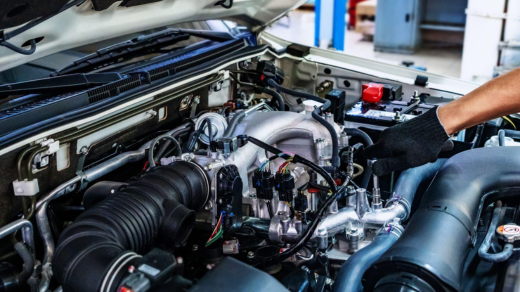The Foundation of Forced Induction
Nissan’s contribution to automotive performance extends far beyond conventional achievements, establishing benchmarks that continue influencing modern engine design. From the legendary RB series that powered Skyline GT-Rs to innovative VR engines and efficient turbocharged four-cylinders, Nissan has consistently pushed boundaries while maintaining the reliability essential for real-world use. This combination of innovation and dependability has created a devoted following among enthusiasts who appreciate engineering excellence.
The story of Nissan’s performance engines begins with the L-series inline-six engines of the 1970s. While not originally turbocharged, these engines established Nissan’s reputation for building robust powerplants capable of significant modification. The introduction of turbocharging to the L28 created the L28ET, which powered the 280ZX Turbo and demonstrated Nissan’s early mastery of forced induction. This engine laid groundwork for the turbocharged excellence that would follow.
The Legendary RB Series
The RB series engines represent perhaps Nissan’s greatest achievement in performance engine design. The RB26DETT, powering the Skyline GT-R, became legendary for its strength and modification potential. Twin turbochargers, individual throttle bodies, and remarkably strong internals created an engine that could produce reliable power far exceeding factory specifications. The distinctive sound and character of RB engines made them instantly recognizable and highly sought after worldwide.
Beyond the famous RB26DETT, Nissan created numerous impressive powerplants. The VG30DETT in the 300ZX Twin Turbo showcased advanced technology with variable valve timing and sophisticated twin-turbo systems. The SR20DET became the darling of drifters and tuners, offering impressive power potential from a compact four-cylinder package. Each engine demonstrated Nissan’s ability to create diverse solutions for different performance applications.
Accessing JDM Performance
For those seeking authentic Japanese performance, the ability to buy JDM Nissan engine online has revolutionized access to these legendary powerplants. JDM specifications often included higher boost pressure, more aggressive tuning, and components designed for the demanding Japanese market. These engines provide enthusiasts with factory-engineered performance that exceeds typical export specifications.
The development of the VR38DETT for the R35 GT-R showed Nissan’s continued commitment to pushing technological boundaries. This twin-turbocharged V6 incorporated lessons learned from decades of performance engine development. Hand-assembled by master craftsmen, each engine received individual attention ensuring consistent quality. The result was a powerplant capable of supercar performance while maintaining daily-driver reliability.
Engineering Philosophy
Nissan’s approach to turbocharging differs from many manufacturers. Rather than simply adding boost to existing engines, Nissan engineers designed their turbocharged engines from the ground up to handle forced induction. Strengthened internals, sophisticated cooling systems, and carefully calibrated boost control systems ensure longevity even under demanding conditions. This holistic approach explains why Nissan turbocharged engines often handle additional modifications so well.
The CA18DET deserves recognition as an underappreciated gem in Nissan’s portfolio. This compact turbocharged four-cylinder powered various models with impressive efficiency and surprising performance. Its advanced design included features ahead of its time, making it a favorite among enthusiasts seeking something different from the mainstream. The engine’s responsiveness and modification potential continue attracting dedicated followers.
Modern Technology Integration
Modern Nissan engines continue the performance legacy while addressing contemporary requirements. The VQ37VHR incorporates variable valve event and lift technology, delivering naturally aspirated performance that rivals many turbocharged competitors. Newer turbocharged four-cylinders like the MR20DDT show how downsizing doesn’t mean sacrificing performance, offering impressive power with excellent efficiency.
Maintenance of Nissan performance engines requires understanding their specific needs. Turbocharged engines particularly benefit from quality oil and regular changes, as turbochargers subject oil to extreme conditions. Cooling system health becomes critical in modified applications where power levels exceed stock specifications. However, when properly maintained, these engines routinely achieve high mileage while retaining their performance characteristics.
The Tuning Community
The tuning community surrounding Nissan engines remains one of the most active and innovative. From mild street builds to extreme drag racing applications, the knowledge base for modifying these engines continues expanding. This collective expertise benefits all enthusiasts, whether planning minor upgrades or complete rebuilds. The availability of quality aftermarket parts ensures that building and maintaining these engines remains accessible.
Environmental considerations haven’t been ignored in Nissan’s engine development. Technologies like direct injection, variable valve timing, and efficient turbocharging reduce emissions while maintaining performance. Many modern Nissan engines achieve impressive fuel economy during normal driving while still delivering excitement when requested. This balance makes them responsible choices for performance-minded drivers.
Racing Heritage
The racing heritage of Nissan engines provides constant development feedback. From Super GT competition to grassroots drifting events, these engines prove themselves in demanding environments. Technologies and knowledge gained from competition filter down to benefit all users. This real-world validation ensures that Nissan engines can handle the stresses of performance driving when properly prepared.
The future of Nissan performance engines looks exciting despite industry shifts toward electrification. The company’s e-POWER hybrid technology shows how internal combustion engines remain relevant when combined with electric assistance. Meanwhile, continued development of traditional engines ensures enthusiasts will have options for years to come. The enduring popularity of classic Nissan engines guarantees ongoing support from both the manufacturer and aftermarket specialists.
Conclusion
In conclusion, Nissan’s turbocharged legacy represents decades of innovation and engineering excellence. From early pioneers like the L28ET to modern marvels like the VR38DETT, these engines have consistently delivered thrilling performance with surprising reliability. Whether seeking a proven platform for modification or a refined powerplant for spirited driving, Nissan engines offer compelling solutions backed by extensive development and real-world validation. Their combination of advanced technology, robust construction, and passionate community support ensures these engines will continue inspiring enthusiasts for generations to come.

